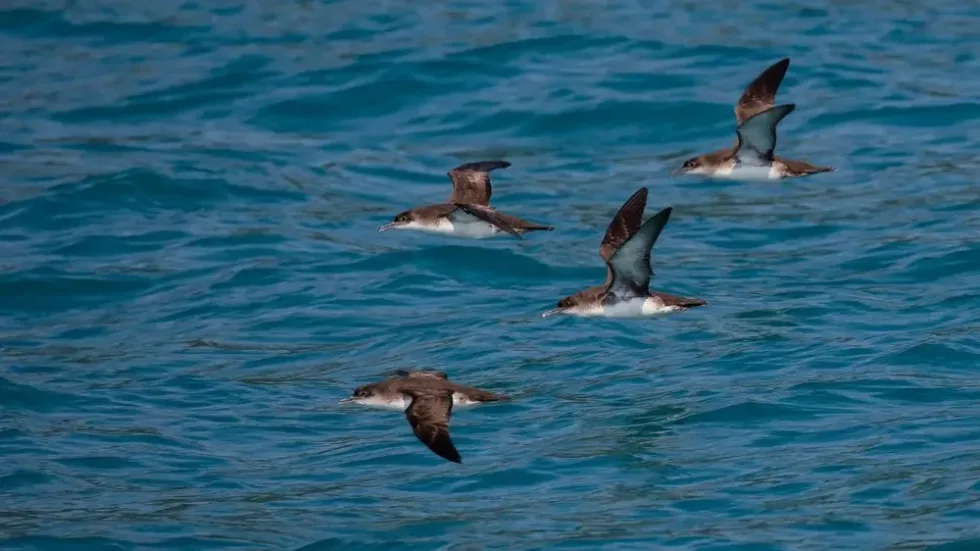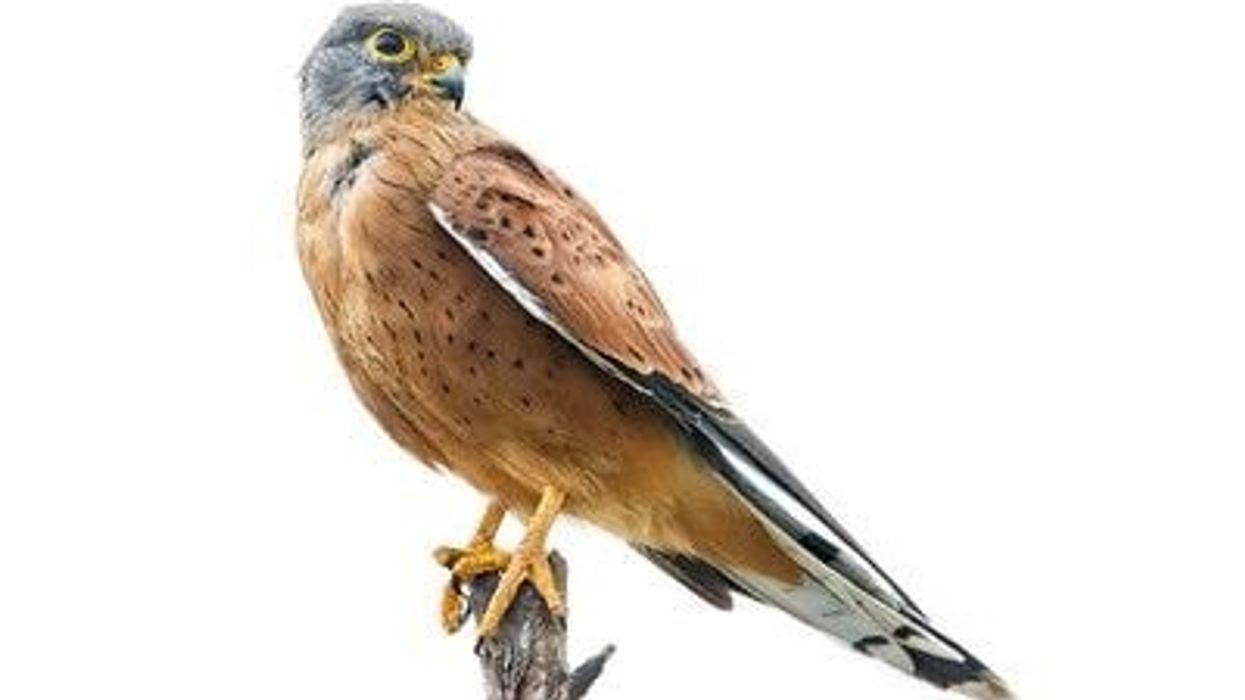The family Procellariidae is a group of seabirds that comprises fulmarine petrels, gadfly petrels, prions, and shearwaters.
All species of this family are accomplished, long-distance foragers. They are also colonial breeders, and often pair up for a long time and use the same breeding site over and over again.
This article is about a special member of this family and it will tell you everything you need to know about this bird including its distribution, range, habitat, conservation status, scientific name, population size, similar species, feeding, breeding, and nesting habits!
The yelkouan shearwater (Puffinus yelkouan), Levantine shearwater, or Mediterranean shearwater is a medium-sized shearwater in the seabird family Procellariidae and is in the genus, Puffinus. Birds of this species are highly social and are found in large numbers.
The scientific name of this species was given by Giuseppe Acerbi, an Italian naturalist, explorer, and composer in 1827.
It was formerly considered a subspecies of the Manx shearwater. The name Mediterranean shearwater was given to them after the split, it is now considered a monotypic species, as the Balearic shearwater (Puffinus mauretanicus) has been separated from it.
The two living Mediterranean lineages of these birds probably separated before the end of the Pliocene period, approximately 2 million years ago.
These birds have dark plumage and are often confused with many stray birds and the Manx species because of their overlapping range. The population of this species has been decreasing rapidly due to heavy predation and habitat loss.
Learn about some other birds from our sooty shearwater facts and frigate bird facts pages.
Yelkouan Shearwater Interesting Facts
What type of animal is a yelkouan shearwater?
The yelkouan shearwater (Puffinus yelkouan) is a bird belonging to the Animalia kingdom.
What class of animal does a yelkouan shearwater belong to?
The yelkouan shearwater (Puffinus yelkouan) belongs to the Aves class, genus Puffinus, and belongs to the Procellariidae family.
How many yelkouan shearwaters are there in the world?
The population size of this species sums up to a total of 15,337-30,519 pairs, roughly equating to 46,000-92,000 individuals.
Where does a yelkouan shearwater live?
The yelkouan shearwater (Puffinus yelkouan) endemic distribution occurs across the eastern Mediterranean, the Black Sea, North America, and some parts of Spain.
What is a yelkouan shearwater's habitat?
These birds of the Procellariidae family are generally found in regions close to the open oceans. The species is widespread at sea but prefers dwelling and foraging over continental shelves and in cooler waters.
Large-sized groups are often found in regions where hot and cold waters meet. They often come to shores when the water level rises or during high tides. The breeding lands consist of soft, sandy, or muddy soils.
They usually nest in burrows or rock crevices on offshore islands, and coastal hills. Birds of this species spend the winter in the western Mediterranean or North Atlantic.
Who do yelkouan shearwater live with?
The yelkouan shearwater (Puffinus yelkouan) bird is found in a large group often made up of 100-1000 birds. This is similar to the Manx and Balearic species.
How long does a yelkouan shearwater live?
A yelkouan shearwater (Puffinus yelkouan) has an average life span of 15-19 years in the wild. Some can live up to 25 years.
How do they reproduce?
This species starts breeding around five to nine years of age. Yelkouan shearwaters form monogamous pairs and breed across their distribution on sandy islands and coastal cliffs across the eastern and central Mediterranean.
The breeding season generally begins in winter, however some species that occupy the Atlantic range breed in late summer. This species has breeding colonies and builds their nests inside burrows.
They only visit their nests during the night, or once it's dark to keep its location hidden due to predation by large falcons or wild cats. The burrow system is known to be complex and it varies with locality as several pairs may share common entrances.
These birds tend to return to the same area year to year but may not have the same burrows every year.
A single white egg is laid by the female around late November to mid-December. The incubation period takes 53-58 days and is done by both the parents.
The chick's care is also done by both the parents. Chicks fledge at about 86-106 days and are independent of here.
What is their conservation status?
The species is under threat as their population size has been decreasing rapidly due to the development of various holiday resorts near the breeding sites, and from predation by animals like rodents and cats.
The Le Levant Island is an important breeding site of this species, but an estimated 1,000 birds are killed each year on this island by cats and other wild animals.
Recent studies conducted on several breeding colonies revealed that the yelkouan shearwater species has suffered a drastic decline in their population size, and has the highest mortality rate the species have ever faced. If this situation is not managed well and brought under control soon, the species may be close to extinction within a few decades.
The IUNC Red List of Threatened Species has classified the species as Vulnerable to potential extinction.
Yelkouan Shearwater Fun Facts
What do yelkouan shearwaters look like?
The yelkouan shearwater is often confused with the Manx and the Balearic shearwater (Puffinus mauretanicus) because its distribution and range overlap.
However the yelkouan shearwater has a more contrasted coloration pattern than the latter, but is similar to the black and white Manx shearwater of the Atlantic. To separate them, you must pay close attention to their face as the Manx species has a darker and smudgy pattern all over their face, with white feathers curling near its nape.
The yelkouan is a small bird with stiff wings, dark brown upper parts, and paler undersides, whose dorsal side is black and the ventral side is whitish, a dark brown almost black head, a dark, and slender bill.
How cute are they?
These birds look cute due to their small body size, dark plumage, excellent flight skills, beautiful wings, and engrossing behavior.
How do they communicate?
This species is usually silent at the sea but these birds are more vocal and produce raucous cackling calls, higher-pitched, and more drawn out than the Manx shearwater's call, during the night and on the breeding colonies.
How big is a yelkouan shearwater?
The male species grow up to 14.9 in (38 cm) in length, whereas the female species are 11.8 in (30 cm) in length.
How fast can a yelkouan shearwater fly?
The exact speed of this bird is unknown but they are known to be good flyers as they migrate long distances. It has the typical shearing method of flight just like the other species.
The bird's stiff wings allow it to maintain balance while flying close to the water. Its color gradually fades from dark brown to white as it travels low over the sea.
How much does a yelkouan shearwater weigh?
An adult yelkouan shearwater weighs around 11.9-28.2 oz (340-800 g).
What are the male and female names of the species?
There are no scientific names for the males and females of this species.
What would you call a baby yelkouan shearwater?
A baby yelkouan shearwater is called a chick.
What do they eat?
Birds of this species feed on crustaceans, small-size fish like smelt, squid, krill, and offal from fishing vessels hunted or taken from the surface and by diving. This bird frequently dives to depths around 52.4 ft (16 m) in search of food.
This bird can even swim to depths of 196.8 ft (60 m). It is often spotted following fishing ships to catch any fish being thrown off the ships.
Lynxes often prey on these birds.
Are they dangerous?
So far no incidents of these birds causing harm to humans have been reported.
Would they make a good pet?
These birds are wild and difficult to keep as pets and they are classified as Vulnerable to potential extinction. Therefore, we suggest you let them be free in their natural habitat and with their kind.
Did you know...
Other scientific names given to the species include Procellaria yelkouan, Puffinus puffinus yelkouan, and Puffinus yelkouan yelkouan.
At least one mixed breeding colony of the yelkouan and the Balearic shearwaters exists on Menorca.
The yelkouan and Balearic shearwater species reportedly belong to a group of shearwaters that includes one of the three prehistorically and extinct species, the dune shearwater (Puffinus holeae).
This bird was relatively larger and bred in the Canary Islands archipelago of the North Atlantic Ocean, and are also possibly related to the lava shearwater species, as well as an undescribed species from Menorca.
The other ancestor of the Balearic shearwater is said to be the Ibizan Puffinus nestori from the Late Pliocene or Early Pleistocene period.
How do shearwaters sleep?
All species of shearwaters migrate to sandy islands and coastal cliffs during the breeding season. These birds are nocturnal, meaning they are active during the night especially at their colonial breeding sites. They prefer moonless nights and complete darkness as it decreases the chance of a predatory attack. They often produce soft calls and notes during their nighttime activities.
How did the shearwater get its name?
The name shearwater is a reference made to the bird's flight style. This bird is known for swiftly shearing across the fronts of waves with its wings held stiff.
Studies conducted on sooty shearwaters revealed that they migrate in the range of 39,767.7 mi (64,000 km) in a single year. This bird migrates and travels more than any other animal of the world!
Here at Kidadl, we have carefully created lots of interesting family-friendly animal facts for everyone to discover! Learn more about some other birds from our bowerbird fun facts or toucan facts for kids pages.
You can even occupy yourself at home by coloring in one of our free printable yelkouan shearwater coloring pages.
Second image by Emoke Denes










